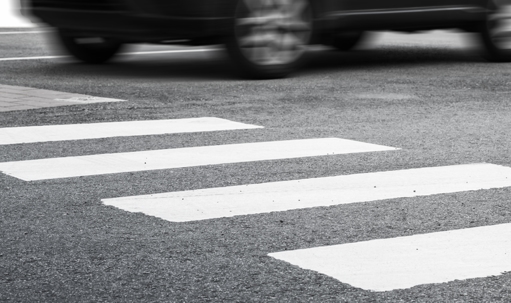Florida's warm climate and vibrant communities make it an ideal place for outdoor activities, including walking and cycling. However, with an increasing number of pedestrians sharing the roads with vehicles, the risk of accidents has also risen. According to data from the Florida Department of Highway Safety and Motor Vehicles, pedestrian fatalities accounted for a significant portion of traffic-related deaths in recent years. In this article, we'll explore proactive measures to prevent pedestrian accidents involving vehicles in Florida, promoting safer streets for everyone.
Understanding the Risks:
Florida's bustling urban centers, tourist attractions, and residential neighborhoods pose unique challenges for pedestrians and drivers alike. Factors such as distracted driving, speeding, impaired driving, and inadequate pedestrian infrastructure contribute to the heightened risk of accidents.
Pedestrian accidents can result in devastating consequences, including severe injuries and fatalities. Vulnerable road users, such as children, the elderly, and individuals with disabilities, are particularly at risk. Therefore, it's imperative for both drivers and pedestrians to prioritize safety and exercise caution on the roads.
Proactive Measures for Prevention:
To mitigate the risk of pedestrian accidents with vehicles in Florida, it requires a collective effort involving motorists, pedestrians, city planners, and law enforcement. Here are some proactive measures that can help prevent such accidents:
1. Increased Awareness and Education:
- Launch public awareness campaigns to educate both drivers and pedestrians about safe road practices.
- Integrate pedestrian safety education into school curricula to instill safe habits from a young age.
- Conduct driver education programs emphasizing the importance of yielding to pedestrians and staying vigilant, especially in high-foot traffic areas.
2. Enhanced Infrastructure:
- Improve pedestrian infrastructure by installing crosswalks, traffic signals, pedestrian islands, and accessible sidewalks.
- Implement traffic calming measures, such as speed bumps and reduced speed limits in residential areas and school zones.
- Designate dedicated pedestrian pathways and bike lanes to separate non-motorized traffic from vehicles, enhancing safety for all road users.
3. Strict Enforcement of Traffic Laws:
- Enforce traffic laws rigorously, particularly those related to speeding, distracted driving, and failure to yield to pedestrians.
- Implement targeted enforcement campaigns in areas with high pedestrian activity or a history of accidents to deter reckless driving behavior.
- Increase penalties for traffic violations that endanger pedestrian safety, such as failure to stop for pedestrians at crosswalks.
4. Technology and Innovation:
- Explore the use of technology to enhance pedestrian safety, including pedestrian detection systems in vehicles and smart crosswalks with warning signals.
- Develop mobile applications and digital platforms to provide real-time information on pedestrian-friendly routes, safe crossing locations, and traffic updates.
5. Community Engagement and Collaboration:
- Foster collaboration between local authorities, community organizations, and transportation agencies to address pedestrian safety concerns holistically.
- Solicit input from residents and stakeholders to identify problem areas and implement targeted solutions tailored to the unique needs of each community.
- Encourage community-led initiatives, such as neighborhood watch programs and pedestrian advocacy groups, to promote a culture of safety and shared responsibility.
Preventing pedestrian accidents involving vehicles in Florida requires a multifaceted approach encompassing education, infrastructure improvements, enforcement, technological innovations, and community engagement. By working together to prioritize pedestrian safety and foster a culture of mutual respect on the roads, we can create safer environments for pedestrians and drivers alike. Let's strive to build communities where everyone can navigate the streets with confidence, knowing that their safety is a top priority.

